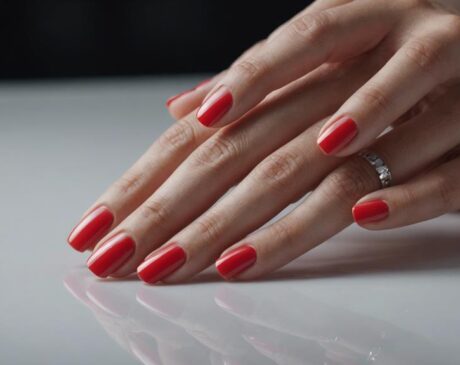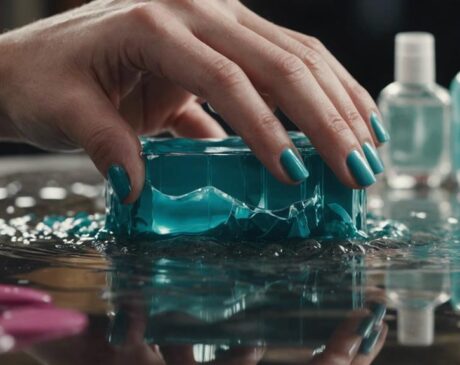Why Is My Fake Nail Hurting My Finger?
Improperly sized or applied fake nails can result in discomfort and pain on your finger. Issues like allergic reactions to glue, nail lifting, or excessive pressure on the nail bed can cause these problems. Symptoms may include discoloration, swelling, or pus formation. In severe cases, nail removal might be necessary to alleviate the pain. Proper care and maintenance are crucial for healthy nails. Seek appropriate treatment to avoid long-term damage. Understanding the causes and symptoms can help you prevent future discomfort and keep your nails in good condition.
Key Takeaways
- Incorrect nail sizes cause discomfort and pain.
- Improper application leads to pain and pressure.
- Use proper glue application techniques.
- Opt for customizable sizing options for a better fit.
- Follow correct application techniques to prevent discomfort.
Incorrect Nail Size
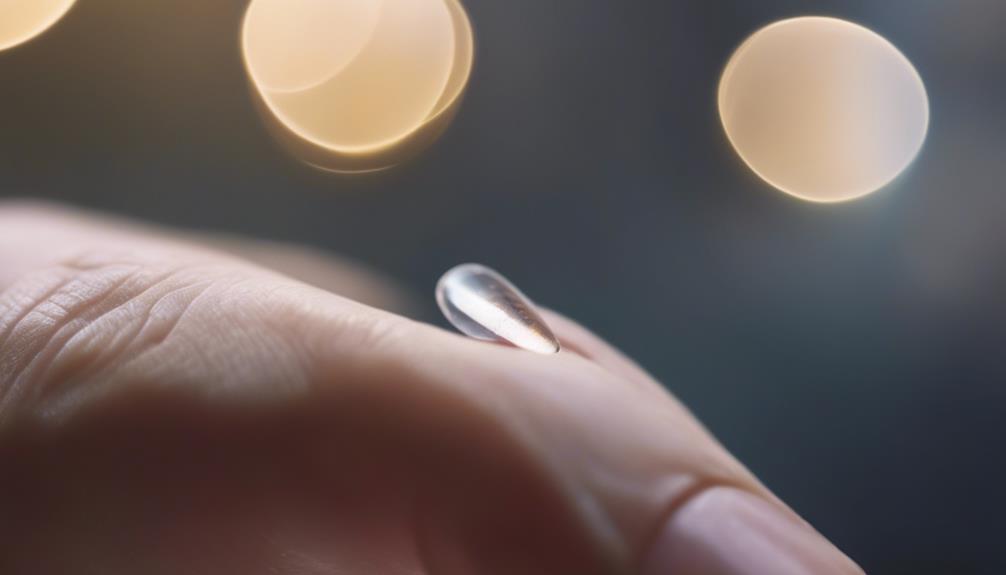
The discomfort caused by fake nails on your fingers can often be attributed to wearing incorrect nail sizes. When the fake nails are too large or too small for your natural nails, it can lead to various issues such as pain, pressure, and even potential damage to your nail bed. Innovations in the nail industry have introduced sizing kits and customizable options to ensure a better fit for individuals seeking to adorn their nails with artificial enhancements.
Choosing the correct nail size is crucial to prevent unnecessary discomfort and pain. Ill-fitting fake nails can cause strain on your natural nails, leading to soreness and potential long-term damage. By embracing new technologies that allow for precise measurements and customization, individuals can enjoy the beauty of fake nails without compromising on comfort.
Improper Nail Application
Improper nail application can lead to discomfort and pain in the fingers. Nail glue overuse and using incorrect nail sizes are common mistakes that can result in these issues. It's important to follow proper nail application techniques to prevent unnecessary finger soreness and discomfort.
Nail Glue Overuse
Excessive application of nail glue can lead to discomfort and potential damage to the nail bed. When applying fake nails, it's essential to use the right amount of glue to ensure a secure bond without causing harm. Overuse of nail glue can result in uneven pressure on the nail bed, leading to pain and even fungal infections. To prevent these issues, consider the following tips for proper nail glue application:
| Nail Glue Application Tips | ||
|---|---|---|
| Use a small amount of glue | Apply glue evenly on the nail | Avoid getting glue on the skin |
| Press nails firmly for 10-15 seconds | Allow glue to dry completely before use |
Incorrect Nail Size
Incorrect sizing of fake nails during application can lead to discomfort and potential damage to the natural nail underneath. When fake nails are too large or too small for the natural nail, they can cause pressure on the nail bed, leading to pain and even bruising. Ill-fitting nails may also catch on clothing or other objects, increasing the risk of them getting ripped off, which can result in further harm to the natural nail. To prevent these issues, it is crucial to ensure that fake nails are properly sized to fit each natural nail before application. This attention to detail not only enhances comfort but also promotes the health and longevity of both the fake and natural nails.
Allergic Reaction to Glue
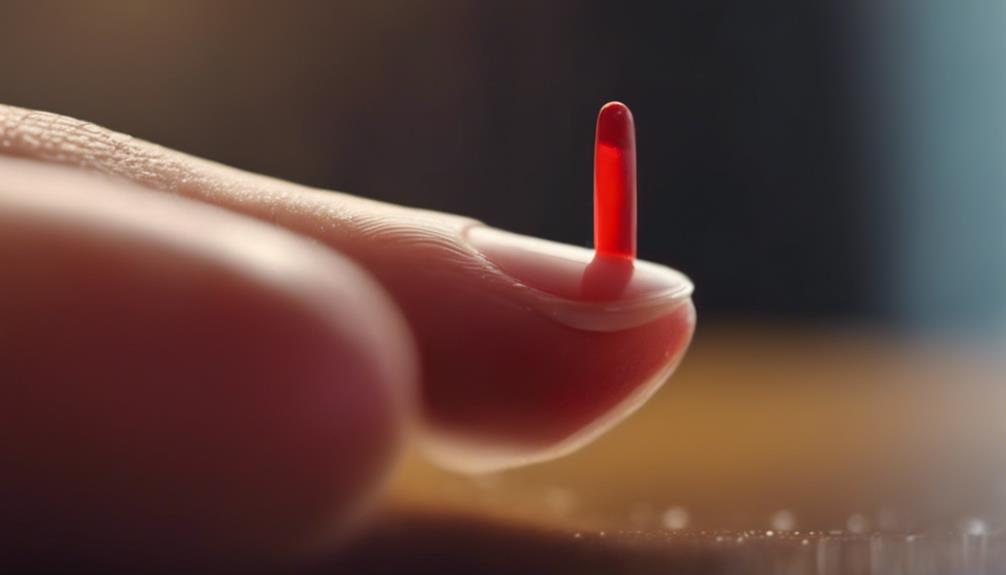
An allergic reaction to the glue used in fake nails can cause discomfort and irritation for individuals who are sensitive to certain chemicals. The adhesive commonly used in attaching fake nails contains acrylate compounds, which may trigger allergic responses in some people. Symptoms of an allergic reaction to nail glue can include redness, itching, swelling, or even a rash around the nail area. In severe cases, blistering or oozing of fluids may also occur.
Individuals with a history of skin sensitivities or allergies are more prone to experiencing such reactions. It's essential to identify the specific ingredient causing the allergy to avoid future discomfort. Innovative solutions like hypoallergenic nail glues or seeking professional advice can help mitigate allergic reactions. Furthermore, opting for alternative nail application methods, such as press-on nails or gel overlays, could be beneficial for individuals with persistent allergic reactions to nail glue. Prioritizing nail health and safety is crucial to prevent discomfort and maintain overall well-being.
Nail Lifting or Separation
Nail lifting or separation is a common issue faced by individuals who wear fake nails. Understanding the causes of nail lifting, such as improper application or trauma to the nail bed, is crucial in preventing this problem. By following proper nail care techniques and ensuring correct application of fake nails, one can minimize the risk of nail lifting and maintain healthy nails.
Causes of Lifting
What factors contribute to the occurrence of nail lifting or separation? Nail lifting, also known as onycholysis, can be caused by various factors. One common cause is excessive moisture exposure, which weakens the bond between the natural nail and the artificial extension. Trauma or injury to the nail bed can also lead to lifting. Additionally, using low-quality nail products or improper application techniques may result in poor adhesion, causing the fake nail to separate from the natural nail. Poor nail hygiene practices, such as leaving nails wet for extended periods or failing to clean the nail bed properly before applying fake nails, can further exacerbate the risk of lifting. Understanding these causes can help prevent nail lifting and maintain healthy, beautiful nails.
Prevention Tips
To prevent the occurrence of nail lifting or separation, maintaining proper nail hygiene practices is essential. Ensure that your nails are kept clean and dry to prevent moisture from accumulating underneath the fake nails, which can lead to lifting. Avoid using harsh chemicals or excessive filing that can weaken the bond between the natural nail and the artificial extension. Opt for high-quality nail products and professional application to minimize the risk of lifting. Additionally, consider getting regular touch-ups to address any signs of lifting promptly. By staying vigilant about your nail care routine and being mindful of how you treat your artificial nails, you can significantly reduce the chances of experiencing nail lifting or separation.
Nail Too Long or Thick
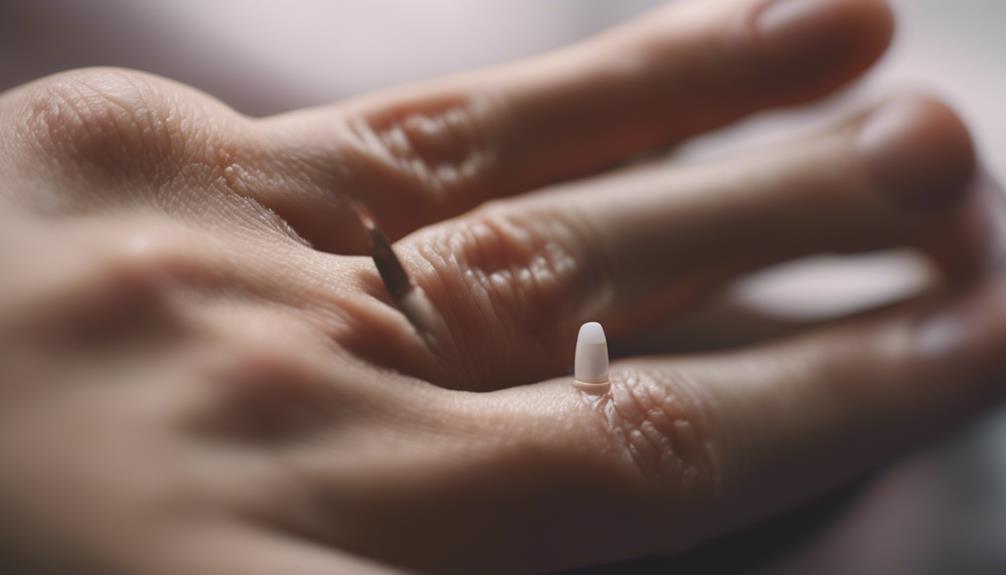
Excessive length or thickness of artificial nails can lead to discomfort and pain in the fingers. When artificial nails are too long or thick, they can put pressure on the natural nail bed and surrounding skin, causing various issues. To address this problem and prevent finger pain, consider the following innovative tips:
- Trim Regularly: Keep your artificial nails at a manageable length by trimming them regularly. This will help prevent them from putting excessive pressure on your natural nails.
- Opt for a Thinner Design: Choose a thinner artificial nail design to reduce the overall thickness and weight on your natural nails and fingertips.
- Use High-Quality Products: Invest in high-quality artificial nails that are designed to be lightweight and comfortable to wear. Lower quality products may be thicker and harder on your fingers.
- Seek Professional Help: If you're experiencing discomfort due to the length or thickness of your artificial nails, consult a professional nail technician for advice on how to adjust them for a more comfortable fit.
Nail Infection or Irritation
When artificial nails are not properly applied or maintained, individuals may be at risk of developing nail infections or experiencing irritation in the nail bed and surrounding skin. This can lead to discomfort, discoloration, and even potential damage if not addressed promptly. Nail infections can be caused by bacteria, fungi, or other pathogens that enter through cracks or gaps between the natural nail and the artificial nail. On the other hand, irritation can arise from the chemicals used in the application process or from the weight of thick or overly long artificial nails pulling on the natural nail.
To better understand the differences between nail infections and irritations, the table below outlines key distinctions:
| Aspect | Nail Infection | Nail Irritation |
|---|---|---|
| Cause | Bacterial, fungal, or pathogenic invasion | Chemicals or excessive weight |
| Symptoms | Discoloration, pain, swelling, pus formation | Redness, tenderness, itching |
| Treatment | Antifungal or antibacterial medication, potential nail removal | Removal of artificial nails, topical soothing remedies |
Pressure on Nail Bed
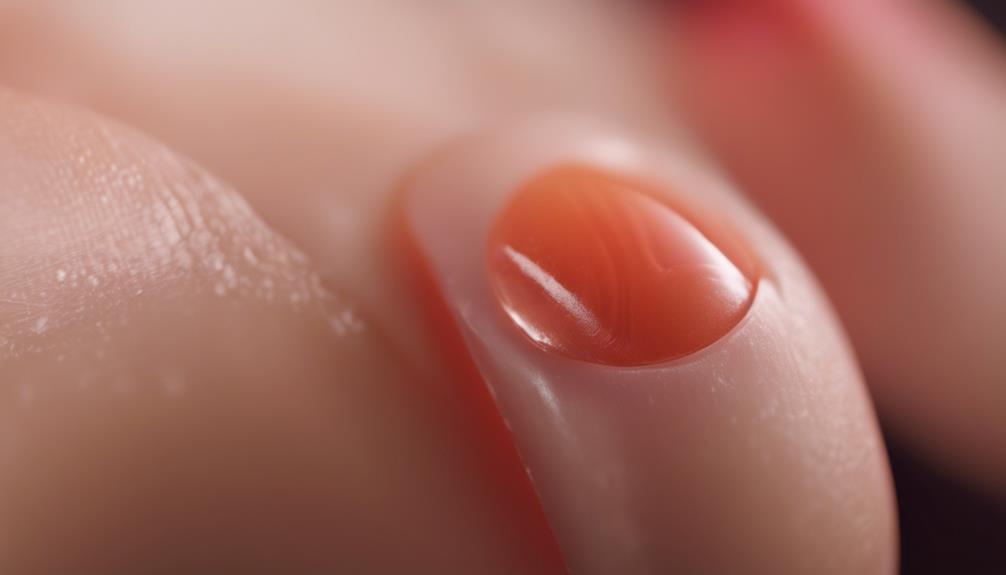
The application of artificial nails can exert undue pressure on the delicate nail bed, potentially leading to discomfort and damage if not managed carefully. This pressure can result from various factors, including the technique used during application, the type of artificial nails chosen, and the length and shape of the extensions. To alleviate the pressure on the nail bed and prevent associated pain or injury, consider the following innovative strategies:
- Choose High-Quality Artificial Nails: Opt for well-made artificial nails that fit your natural nail shape to reduce unnecessary pressure on the nail bed.
- Regular Maintenance: Schedule routine maintenance appointments to ensure that your artificial nails are properly cared for and adjusted to prevent excessive pressure.
- Use Proper Techniques: Work with a skilled nail technician who employs proper techniques when applying and maintaining artificial nails to minimize discomfort and damage.
- Nail Bed Health: Prioritize the health of your natural nail bed by providing it with regular breaks from artificial enhancements to prevent long-term pressure-related issues.
Frequently Asked Questions
Can I Wear Fake Nails While Swimming or Bathing?
It is not recommended to wear fake nails while swimming or bathing as prolonged exposure to water can weaken the adhesive bond, causing the nails to lift or break. Opt for waterproof nail options.
How Can I Prevent Fake Nails From Snagging on Clothing?
To prevent fake nails from snagging on clothing, consider keeping the nails at a moderate length, ensuring they are securely attached, smoothing any rough edges with a nail file, and using a top coat for added protection.
Is It Safe to Apply Fake Nails Over Damaged Natural Nails?
While applying fake nails over damaged natural nails may seem like a quick fix, it can exacerbate existing issues. Prioritize nail health by allowing damaged nails to heal before opting for artificial enhancements. Consult a professional for tailored advice.
Can Fake Nails Cause Discoloration of the Natural Nail?
Fake nails can indeed cause discoloration of the natural nail due to various factors such as prolonged wear, improper application, or use of low-quality products. Understanding proper nail care techniques and using high-quality products can help prevent this issue.
What Should I Do if My Fake Nail Becomes Loose or Falls Off?
When a fake nail becomes loose or falls off, swift action is crucial. Clean the area, trim any remaining fake nail, and protect the natural nail with a bandage or nail glue until it can be professionally fixed.


